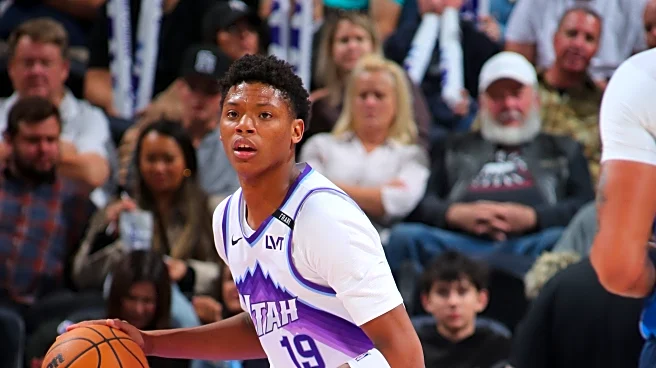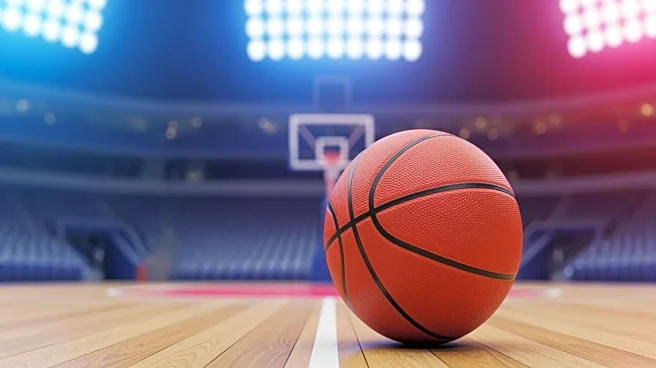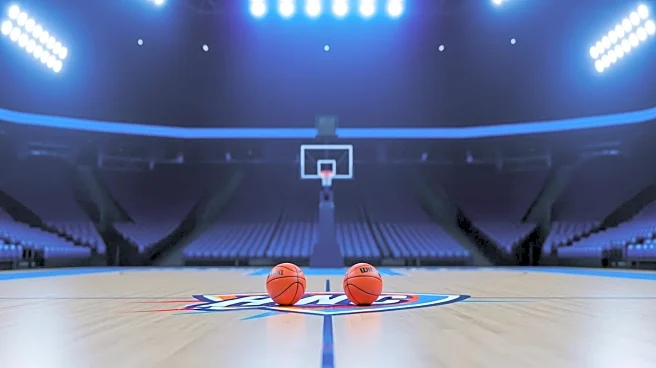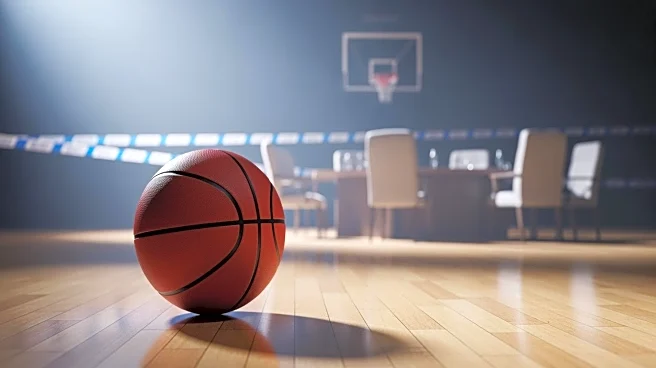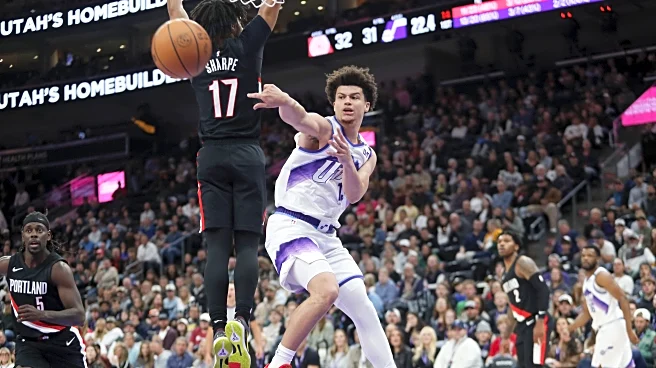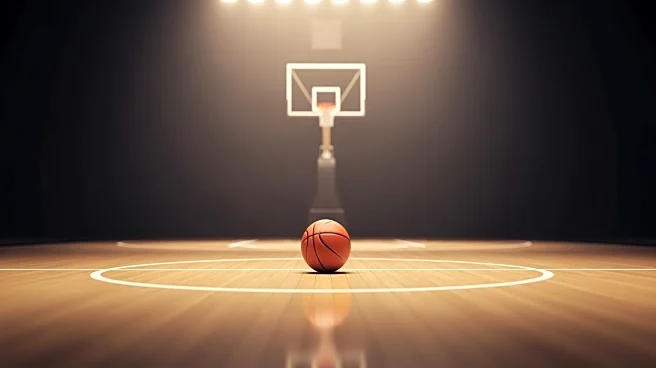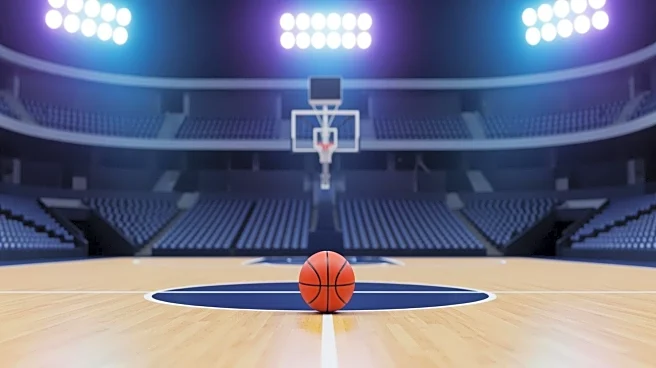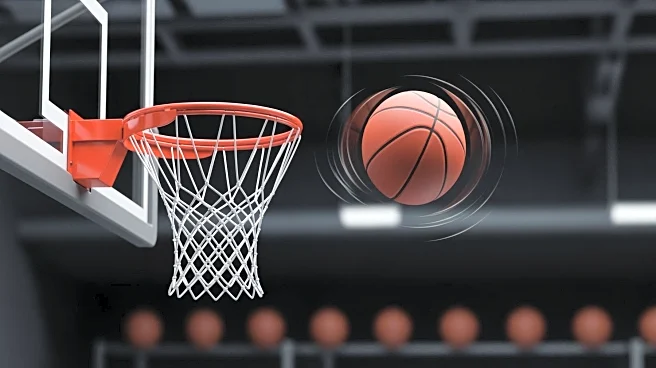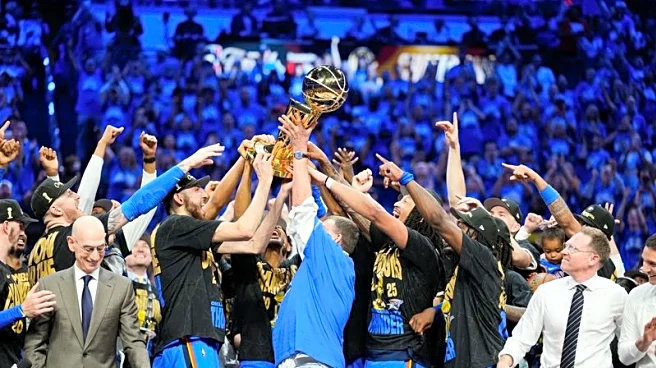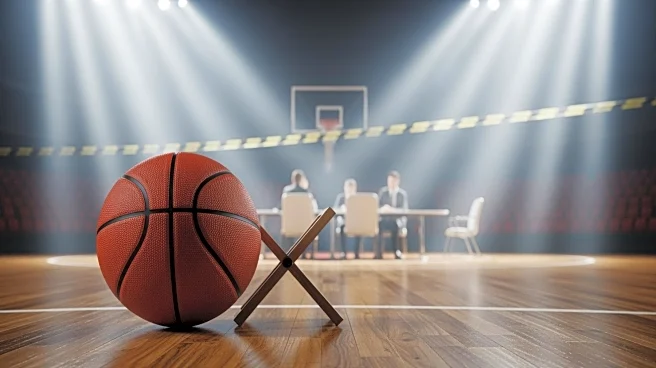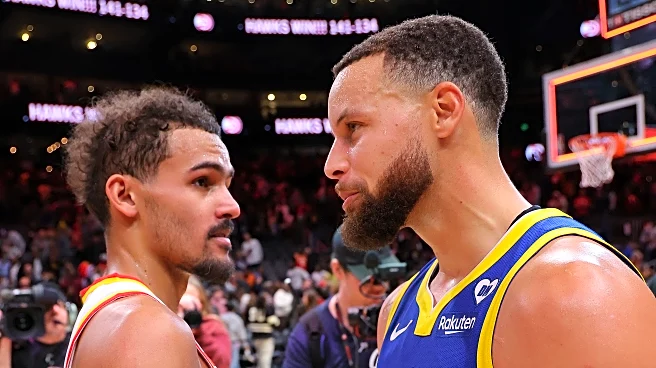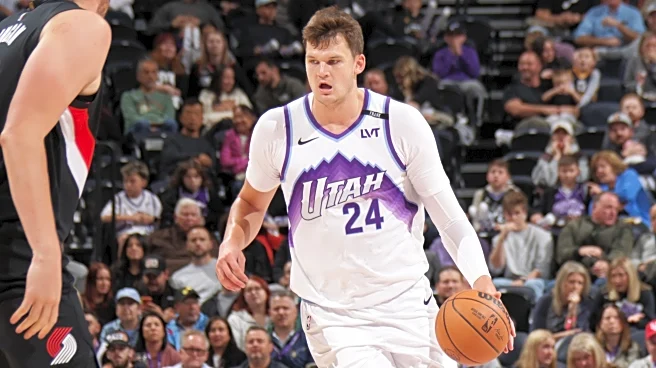More about Bailey and his fit with the Jazz
The reality for Utah Jazz fans is that the whole season might always include Ace Bailey – in whatever form. Whether he’s lighting up highlight reels with explosive dunks or learning through the bumps of his rookie year, the fifth overall pick has already positioned himself as one the centerpieces of the team’s long-term vision.
And while the sample size is small, Bailey’s preseason performances offered a taste of what could be ahead. In three games, he put
up numbers of 16.0 points, 4.7 rebounds, 1.3 assists, and 1.7 steals on an efficient 68.0 TS%.
So let’s take a look at what we’ve seen so far – the flashes that made Bailey one of the most intriguing rookies of the preseason, and why his early form might just be a preview of what’s to come in Salt Lake City.
Bailey’s scoring on off-ball screens
In his lone season at Rutgers, Ace Bailey’s scoring often came from movement rather than isolation. The Scarlet Knights thrived when they ran him off pin-downs, curls, and flare screens – sets designed to free his smooth shooting stroke. According to Synergy, the 19-year-old forward shot an impressive 40.7% from beyond the arc when coming off ball screens, finishing the year with a 56.7 TS%, a strong indicator of efficiency for a first-year collegiate wing.
That same skill translated almost seamlessly in the Jazz’s first two preseason games. Against the Houston Rockets and the San Antonio Spurs, Bailey showcased his knack for using screens to generate clean looks, curling into open midrange jumpers and spotting up for threes in transition. Even with Walker Kessler sitting out, Jusuf Nurkić proved to be an ideal partner – setting solid, well-angled picks that allowed Bailey to square up and shoot comfortably.
On the very first possession of the Jazz’s preseason opener against the Rockets, head coach Will Hardy wasted no time putting his rookie in motion. The play was designed specifically for Bailey – Nurkić set an away/wide screen on the wing, freeing the rookie for an open jumper that became his first basket in a Jazz uniform.
Utah continued to lean into that movement throughout the game, running multiple pin-downs and flare screens to spring Bailey loose.
The results were exactly what Hardy envisioned: clean looks, confident releases, and a rhythm that suited Bailey’s natural game. What stood out most was how effortless he looked rising up – using his length to shoot over defenders – and how dangerous he became when given even a sliver of space.
Bailey’s ability to cut in open spaces
Not only can Bailey shoot from those off-ball screens, his awareness to make those timely cuts to make the defense guessing is also worth noting. Whether he’s darting along the baseline or slipping behind a ball-watching defender, Bailey’s timing feels instinctive – the product of a player who understands spacing, angles, and the rhythm of movement.
Using preseason film once again, it was once again through a two-man action between Bailey and Nurkić. Utah often stationed the Bosnian center at the elbow, where he could hit Bailey cutting through the lane. Those reads produced easy buckets and forced defenses to choose between collapsing on Nurkić or staying glued to Bailey’s movement.
Also in one sequence versus the Spurs, Nurkić’s simple high-post dribble handoff to Bailey, which he used to find an open spot for a jumper – the kind of connection that looks rehearsed even though it’s rooted in instinct.
This playtype was not much used in Rutgers, where it was just 6.3% of his possessions, but having a 1.4 points per possession (PPP) rate is something to be excited about – especially if Hardy continues to spam off-ball actions for Bailey.
Bailey’s midrange package
Bailey’s isolation midrange scoring doesn’t rely on brute athleticism but on technique and composure. His lengthy frame gives him a built-in advantage, yet it’s how he uses it that separates him. With a tight handle and advanced footwork for his size, he’s able to manipulate defenders – using jab steps, hesitation dribbles, and sudden pull-backs to create just enough daylight.
What stands out most is his ability to rise up cleanly once he finds that pocket of space. Bailey’s compact release and long arms make his jumper nearly impossible to contest, even against rangy defenders. He doesn’t need much separation – a simple shoulder fake or a subtle shift of balance is often enough to tilt his defender off-line. And when he elevates, the shot looks effortless, fluid, and under control. That kind of balance in isolation is rare for a 19-year-old wing

This midrange comfort zone serves as Bailey’s equalizer, where he shot 47.1% in college. It punishes bigs who drop too deep, wings who gamble for steals, and switches that try to smother him with length. When the shot clock winds down and the offense stalls, he’s capable of generating clean looks without the need for elaborate sets. It’s a pure, self-sustaining form of offense – one that reflects polish beyond his years and hints at the makings of a go-to scorer in the Jazz’s future.
